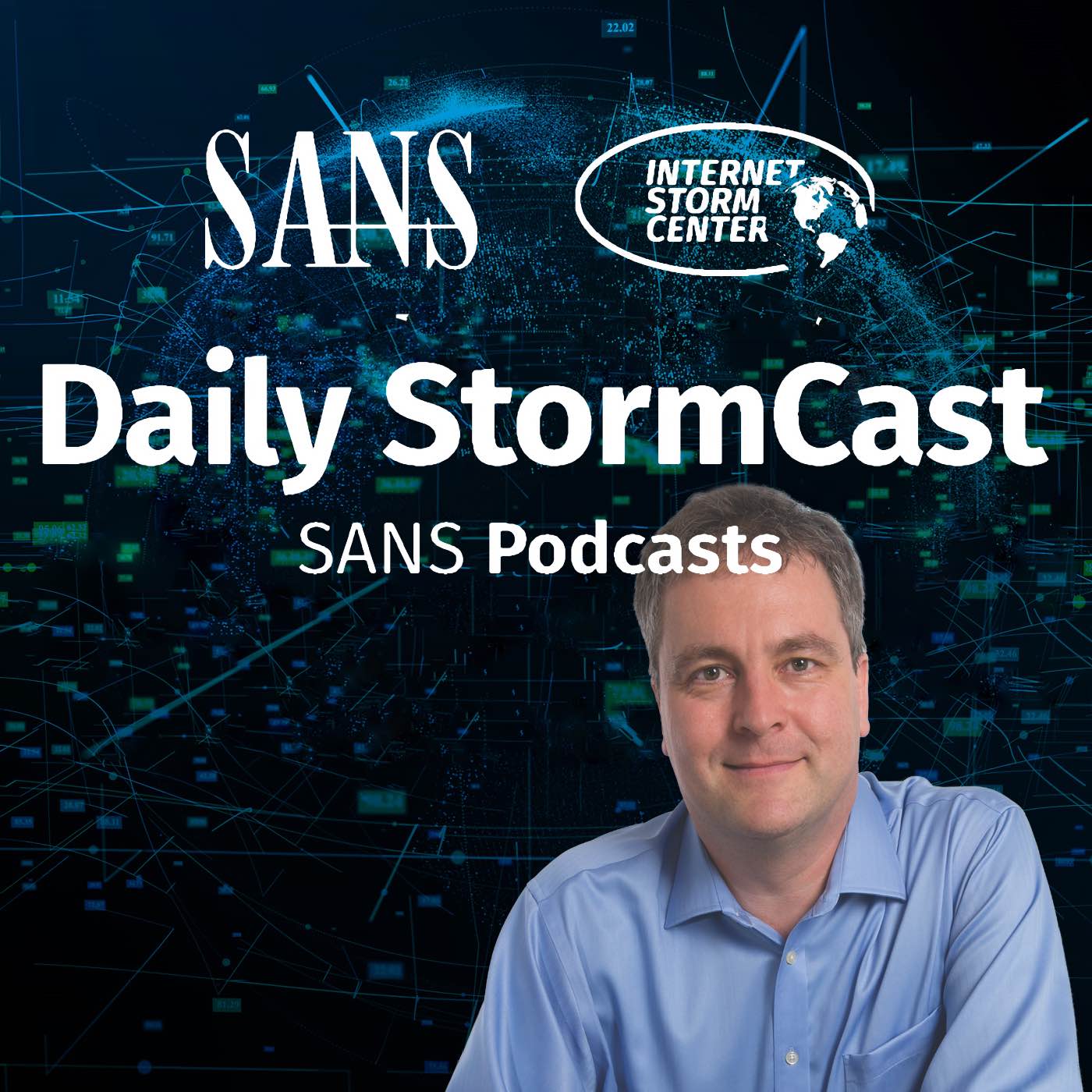Handler on Duty: Johannes Ullrich
Threat Level: green
Podcast Detail
SANS Stormcast Tuesday, November 25th, 2025: URL Mapping and Authentication; SHA1-Hulud; Hacklore
If you are not able to play the podcast using the player below: Use this direct link to the audio file: https://traffic.libsyn.com/securitypodcast/9714.mp3
My Next Class
| Application Security: Securing Web Apps, APIs, and Microservices | Dallas | Dec 1st - Dec 6th 2025 |
| Network Monitoring and Threat Detection In-Depth | Online | Central European Time | Dec 15th - Dec 20th 2025 |
Conflicts between URL mapping and URL based access control.
Mapping different URLs to the same script, and relying on URL based authentication at the same time, may lead to dangerous authentication and access control gaps.
https://isc.sans.edu/diary/Conflicts%20between%20URL%20mapping%20and%20URL%20based%20access%20control./32518
Sha1-Hulud, The Second Coming
A new, destructive variant of the Shai-Hulud worm is currently spreading through NPM/Github repos.
https://www.koi.ai/incident/live-updates-sha1-hulud-the-second-coming-hundred-npm-packages-compromised
Hacklore: Cleaning up Outdated Security Advice
A new website, hacklore.org, has published an open letter from former CISOs and other security leaders aimed at addressing some outdated security advice that is often repeated.
https://www.hacklore.org
| Application Security: Securing Web Apps, APIs, and Microservices | Dallas | Dec 1st - Dec 6th 2025 |
| Network Monitoring and Threat Detection In-Depth | Online | Central European Time | Dec 15th - Dec 20th 2025 |
| Application Security: Securing Web Apps, APIs, and Microservices | Orlando | Mar 29th - Apr 3rd 2026 |
| Network Monitoring and Threat Detection In-Depth | Amsterdam | Apr 20th - Apr 25th 2026 |
| Application Security: Securing Web Apps, APIs, and Microservices | San Diego | May 11th - May 16th 2026 |
| Network Monitoring and Threat Detection In-Depth | Online | Arabian Standard Time | Jun 20th - Jun 25th 2026 |
| Network Monitoring and Threat Detection In-Depth | Riyadh | Jun 20th - Jun 25th 2026 |
| Application Security: Securing Web Apps, APIs, and Microservices | Washington | Jul 13th - Jul 18th 2026 |
Podcast Transcript
Hello and welcome to the Tuesday, November 25th, 2025 edition of the SANS Internet Storm Center's Stormcast. My name is Johannes Ullrich, recording today from Jacksonville, Florida. And this episode is brought to you by the SANS.edu Graduate Certificate Program in Incident Response. Well, today's diary is not some breaking new item for a change, but something that I have been seeing more and more lately. And it's nothing really new, but I think worth pointing out and reminding people about. And that's how URL mapping and URL-based access control can sometimes lead to gaps in authentication and access control. We have seen this lately with the Oracle Identity Manager, where just adding a little extension, sort of cost bypassing of the access control. And then, so what prompted me to write this diary is earlier today, I saw an older vulnerability in the Hitachi, Wantara, Pantau business analytics server being exploited. Same pattern here, as long as you append require.js to the URL, you're good to go. You can basically execute whatever you want. And this, in this particular case, then opens up a command injection vulnerability that, well, otherwise would be protected by authentication. So that's really what's happening here. And the reason behind it is that for a range of different URLs, so as long as you have this LDAP three node children part in the URL, it's all going to the same script. And that's sort of where the URL mapping comes in. In web servers, you often map your URLs that several URLs or range of URLs or any request to particular directory is really processed by the same script. So appending things like here require.js does not change what's being executed, but it does change your authentication logic. And that's really the problem here. And that's something, looking at Java applications, I see that a lot because the way they're sort of being built. But in general, in particular, if you have sort of some middle boxes or so doing URL-based authentication, if you're not careful, it's then bypassable by taking advantage of some of these URL mappings or aliases or rewrites or whatever your particular web server calls them. And then you have a new NPM warm. This one very much modeled after the Shah Hulut warm. Now they call it Shah 1 Hulut warm. This particular warm is very similar. It attempts to gain access to GitHub and NPM credentials and then spreading itself via any credentials it can find to infect other repositories. It'll also make repositories public if it finds access to them. What's very different to the original version is that it's a destructive warm. If it can't find any GitHub or NPM credentials, it will actually go out and delete the user's home directory. So the prior warm didn't do that. It sort of had a more simple fallback mechanism. But this version now is destructive. So if you see any files in your home directory deleted, well, that may be the reason for it. At this point, there are a few hundred NPM repositories affected by this particular warm. And of course, there's still a little bit of a developing story at this point. I'll link to the Koi security version of this story. But there are others who have broken basically the same story as this warm came out. The real question is kind of what took him so long, given that the original warm was quite successful. And, well, of course, by the nature of the event, open source, it was not really that difficult for someone else to adapt this warm for their own purposes. So I don't think that these two are related in the sense that it's the same actor behind these two versions. Possible, but not very likely at this point. And then we have a new website, hacklore.org. This website was created by a group of former chief security officers, security leaders, and practitioners. How do you call them? Essentially people who are around the industry for quite a while. And, well, they try to clean up with some of the outdated security advice that is often being repeated and no longer really timely. The six things that they are noting here is, first of all, avoid public Wi-Fi. Then never scan QR codes. Never charge devices from public USB ports. Turn off Bluetooth and NFC. Regularly clear cookies. And regularly change passwords. These are definitely often being discussed. So maybe this open letter they published here at hacklore.org will help with some more informed security decisions, discussions on the Thanksgiving table. But I think it's a good initiative. And I'm mostly behind these points, particular in sort of the absolutes as they're being formulated here. Well, and that's it for today. Remember, there will be a podcast on Wednesday, but none on Thursday, Friday because of Thanksgiving. That's it for today. And talk to you again tomorrow. Bye. Bye. Thank you.











